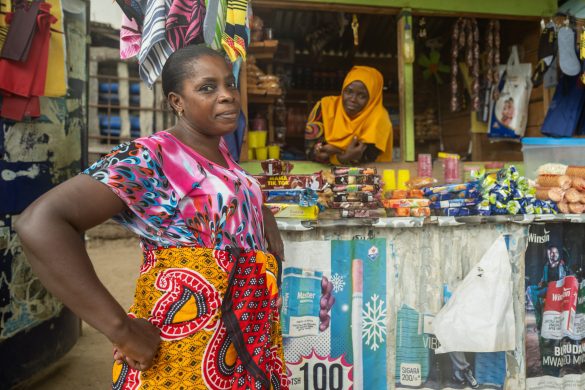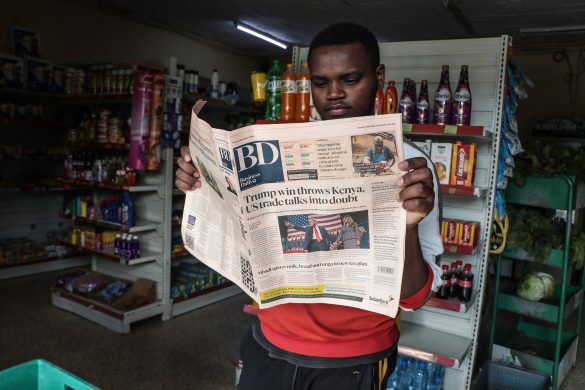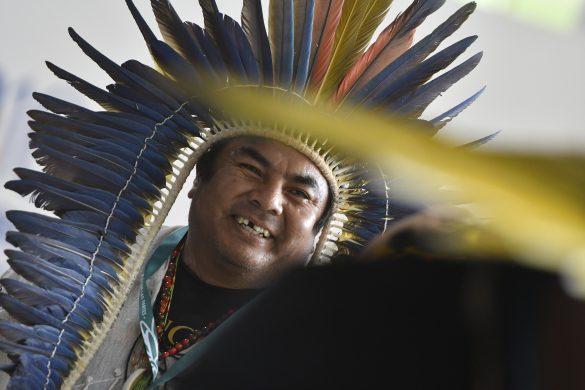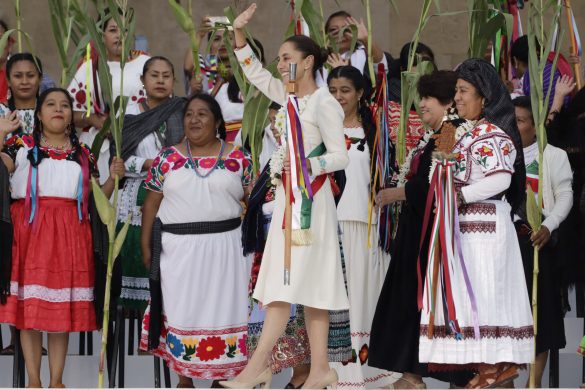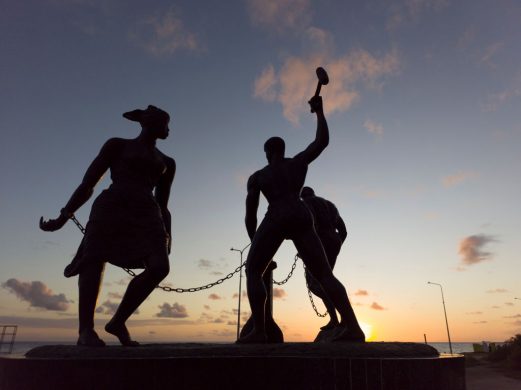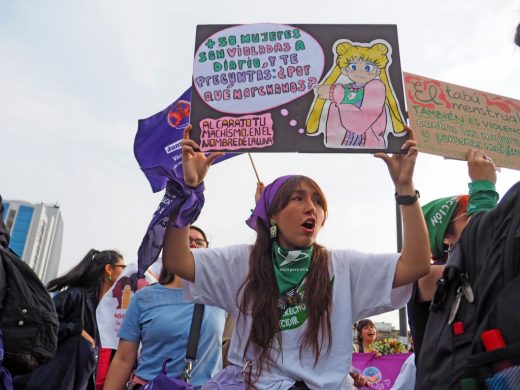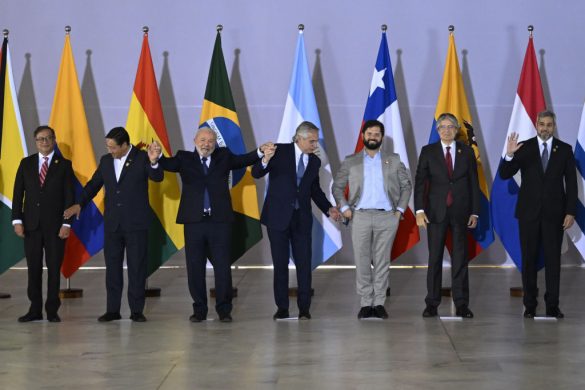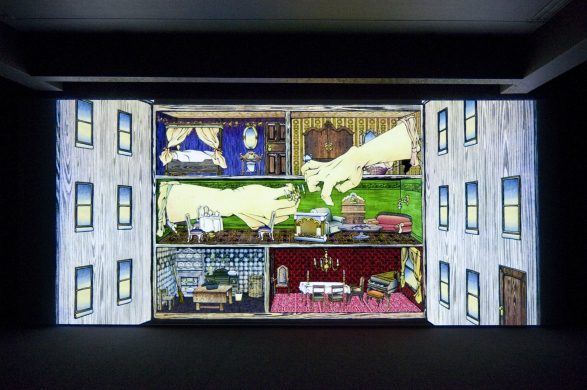BUENOS AIRES, 21 October: Defying Latin Americas longtime reputation as a bastion of machismo (mandsvælde), women in South America are winning political power at an unprecedented rate and taking top positions in higher education and even, albeit (godt nok) more slowly, in business.
The election last year of Michelle Bachelet to Chiles presidency and the all-but-certain victory of Cristina Fernández de Kirchner in Argentina’s presidential balloting Octover 28 are the most visible examples of the trend.
South American women also are leading important social movements and are earning, studying and speaking out more than ever. For the first time, women are forcing their traditionally male-dominated societies to confront such issues as domestic violence and reproductive health.
– I think there has been a general change, said Elena Highton, who in 2004 became Argentina’s first female Supreme Court judge appointed by a democratically elected government. She promptly headed a commission on domestic violence.
It is a fundamental shift in a region long ruled almost exclusively by men, where the influence of women was relegated to the home or, in public life, to supporting roles for powerful spouses.
Such perceptions (antagelser/forestillinger) changed for good, many say, with Bachelets election last year in one of the most socially conservative countries in the hemisphere. A single mother and an atheist with no family member already in power, Bachelet, 56, won support from male and female Chileans in her historic election.
Public opinion polls in neighboring Argentina show similar widespread support for Kirchner, a longtime politician and current senator who is expected to win the contest to succeed her husband, Néstor, in this countrys top job.
Women are considered possible successors to the top spot elsewhere in South America.
In Paraguay, former education minister Blanca Ovelar is a top candidate to represent the long-ruling Colorado Party in next Aprils presidential race. In Brazil, presidential chief of staff Dilma Rousseff has emerged as a possible front-runner for the presidency in 2010.
They follow women who were elected president in Central America in the 1990s, Violeta Barrios de Chamorro in Nicaragua and Mireya Moscoso Rodríguez in Panama.
The emergence of what has been called a ”feminine bloc” in the Western Hemisphere’s Southern Cone is yet more evidence of the historic changes that have opened doors for millions of women.
Nevertheless, Latin American women still trail men in key measures of social well-being, according to the World Economic Forum, which ranks gender equality in 116 countries based on education, health and economic and political participation. Of Latin American countries, Costa Rica ranked the highest, 31st of 116 countries, and Bolivia, the lowest, at 88th.
But women are steadily catching up, UN statistics show. In many instances, the gaps are closing much faster than they are in the United States.
Wage on the rise
For example, the average wage of urban Latin American women has grown from 70 percent of mens in 1990 to 90 percent this year, and they are expected to reach parity by 2015, UN figures show. For comparison, US women earned 77 percent of what men earned working full-time, year-round jobs in 2006.
In the business world, women make up as much as 35 percent of the managers in private companies, also a dramatic increase from just a decade ago, according to the International Labor Organization.
However, they still account for only 10 percent of company presidents and vice presidents, according to a seven-country survey by the US-based think tank Inter-American Dialogue.
Women have made some of their biggest advances in politics, where thousands of women are reaching public office, many for the first time. About a quarter of all Latin American local council members are women, more than double the percentage from a decade ago.
Women also make up more than a quarter of the Cabinet ministers in the region and more than a fifth of lower-chamber national legislators in Costa Rica, Argentina, Peru, Guyana, Suriname, Ecuador, Honduras and Mexico, double the regional rate in 1990. By comparison, only 16 percent of the US Congress is female.
In the eyes of Ana María Romero de Campero, who was Bolivias top human rights official, women are riding the same democratic wave that has empowered other marginalized groups, such as indigenous people and the poor working class.
“It is no coincidence”, she said, that women are making gains at the same time that her country elected its first indigenous president, Evo Morales, or neighboring Brazil chose Luiz Inácio Lula da Silva, a former factory worker, as its president.
Both leaders were the first presidents in their countries not to come from white, privileged backgrounds.
– This democratic process is raising the question of the rights of different people, Romero de Campero said, adding: – And people are asking, “Do women have the rights of equality along with human rights?’
14 countries in Latin America have passed quota laws requiring that as many as 40 percent of the candidates for political posts be women. Similar laws require that women fill a minimum number of union leadership posts and even executive-branch positions.
That has produced dramatic results in countries such as Argentina, the first in the region to implement quotas. Women now make up 35 percent of the lower house and 43 percent of the Senate.
Only nine countries claim higher percentages of female lower-house legislators, and two of those are in Latin America – Costa Rica and Cuba. The other seven are Rwanda, Sweden, Finland, Norway, Denmark, the Netherlands and Spain.
Kilde: The Push Journal



